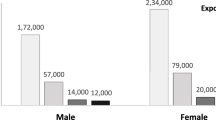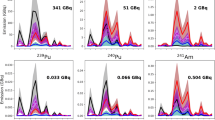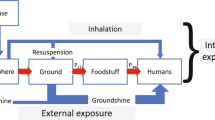Abstract
PERHAPS the simplest and most widely used methods for the evaluation of the long-range hazard due to atmospheric radioactivity and fallout are the air-filter and gummed-paper techniques, respectively. Since effects associated with meteorological factors, especially rain, make it difficult to predict the performance of one method relative to the other, we believe that an experimental comparison which was made at the time of the ‘Teapot’ tests may be of interest.
This is a preview of subscription content, access via your institution
Access options
Subscribe to this journal
Receive 51 print issues and online access
$199.00 per year
only $3.90 per issue
Buy this article
- Purchase on Springer Link
- Instant access to full article PDF
Prices may be subject to local taxes which are calculated during checkout
Similar content being viewed by others
References
Einsenbud, M., and Harley, J. H., Science, 121, 677 (1955).
Author information
Authors and Affiliations
Rights and permissions
About this article
Cite this article
BLIFFORD, I., LOCKHART, L. & BAUS, R. Relationship between Air Concentration of Radioactive Fission Products and Fallout. Nature 177, 990–992 (1956). https://doi.org/10.1038/177990a0
Issue Date:
DOI: https://doi.org/10.1038/177990a0
Comments
By submitting a comment you agree to abide by our Terms and Community Guidelines. If you find something abusive or that does not comply with our terms or guidelines please flag it as inappropriate.



